The night before Thanksgiving, 1971, a man calling himself Dan Cooper, wearing a suit and raincoat, walked up to the Northwest Orient desk at Portland airport in the United State's Pacific Northwest and spent $20 on a one-way ticket to Seattle.
On the plane, he donned a pair of dark sunglasses, ordered a whiskey, lit up a cigarette and coolly handed the stewardess a note. In capital letters, it read: I HAVE A BOMB IN MY BRIEFCASE. I WILL USE IT IF NECESSARY. I WANT YOU TO SIT NEXT TO ME. YOU ARE BEING HIJACKED.
What happened next would ensure Cooper a place in the pantheon of American folk heroes. He asked the stewardess to relay the following request to the captain: he wanted $200,000 and four parachutes, and in return, he'd allow 36 people to leave the aircraft when the plane landed in Seattle. The FBI organised the swap, and when the plane was sky-bound again, with just the pilot, co-pilot, one stewardess and Cooper on board, his instructions were to head for Mexico, maintaining an altitude under 10,000 feet. Then, somewhere over the lower Cascade mountains, 25 miles north west of Portland, Cooper released the plane's aft stairs, stepped out, and, with one of the parachutes strapped to his back, jumped into the stormy night and was never seen or heard from again.
Forty years on from Cooper's gutsy spectacle, I've come to the Pacific Northwest to find out about America's only unsolved hijacking - one that the FBI still considers open and which it is, understandably, still very keen to solve.
Back in 1971, a reporter working for one of the wire services misheard the name of the hijacker, and ever since then he has been referred to as DB Cooper, rather than Dan. Over the past 40 years there have been more than 1,000 Cooper suspects, several deathbed confessions, a film (starring Robert Duvall), and - to my count - 17 books. The latest, Skyjack: The Hunt for DB Cooper, is out next month. As one person told me, Cooper is the Bigfoot of the Pacific Northwest. He is an enigma and a huge subculture has sprung up devoted to sleuthing his story. There's even an annual celebration held in his honour in the tiny hamlet of Ariel, Washington, nestled in the rolling hills north east of Portland, now known as "Cooper Country". And it is in Ariel that I begin my journey.
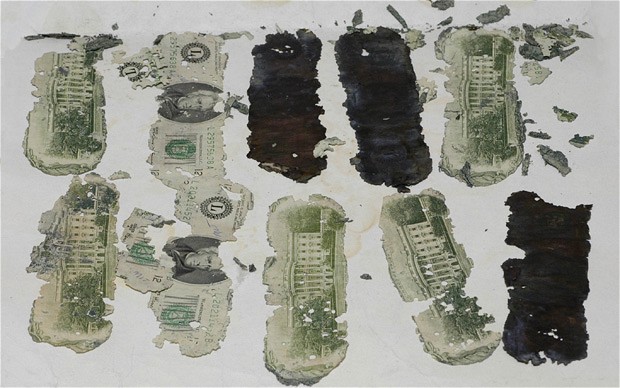
Dona Elliott, the Tavern's owner, says some of the drinkers there that night spotted a man walking up the road from nearby Lake Merwin. I can testify that there's not much around here - just farmland, rolling hills and a highway that disappears into the Cascades - and unsurprisingly, the Tavern's patrons wondered who on Earth would be walking alone outside on such a gruesome night.
The Tavern, a small wooden building built in the Twenties that sits on the corner of a pine-fringed road, is closed on Mondays, but Dona, now 74, has opened up just for me. It has become an unofficial Cooper repository: there's a parachute (not the real one, obviously) pinned to the ceiling, newspaper clippings on every wall and a map showing the route the plance took near the bar.
Each year at its "DB Cooper Day" celebration, which has been going since 1973, old-timers reminisce, Cooper sleuths discuss their ideas and conspiracy theorists - and there are many - attempt a few conversions.
Inside, it smells of dogs and wood fire. A huge deer head fixed to the wall stares at me as I pull up a chair. Dona sits beside me, sipping from a water bottle, and thumbing a scrapbook full of more Cooper news stories. Of the numerous books on Cooper, she says she "hasn't read one yet that's accurate". In fact, to my amusement, Dona doesn't even think Cooper landed in Ariel at all. Someone clever enough to plan such an audacious heist, she says, would have jumped near Portland airport "because they would have never looked for him there". Despite the proprietor's misgivings, the DB Cooper party continues each year. One regular even bore an uncanny resemblance to the artist's sketch that the FBI released of Cooper (which some people also thought looked like Bing Crosby), but Dona assures me "they checked him out thoroughly". I ask why the story is so big still, 40 years on, and she suddenly becomes animated. "Because the government's always screwing us over and finally somebody got 'em back."
It's easy to see how the Cooper legend can capture the imagination. Driving east along Highway 14 from Portland you wonder: did he land somewhere in the remote, desolate mountains and his lifeless body float downstream? If he died though, he had to have family and friends and surely somebody would have come forward. If Cooper had successfully parachuted out here, the fields and marshland would have been devoid of the heavy industry that's encroached on it now, but he could easily have hidden among the rusting grain silos, old farm houses and ranches that have stood on the same spots for years. He could, quite conceivably, have disappeared. You can't help but stare out over this wilderness and wonder. Cooper Country has that effect on you.
The next stop on my journey is a tiny private beach along the Columbia River known as Tina Bar. It belongs to two brothers, Albert and Richard Fazio, whose family farm and gravel company has been here since the early Fifties.
The Fazio brothers received some unwanted attention back in February 1980 when, nine years after the Cooper skyjacking, an eight-year-old boy called Brian Ingram, whose family had been given permission to camp on the beach, found three packets of the Cooper ransom money, still bundled up in rubber bands. It was just under $6,000 - the bulk of the $200,000 was still missing - but it was enough to put Cooper back in the papers and for the Fazios to suddenly see their little beach swarming with police and FBI agents.
Richard, a tall man with grey hair, offers to take me down to Tina Bar, a short walk from his office. It's a quiet stretch on the Columbia, but this is still very much a working river - a 45-feet-deep navigation channel eases freighters loaded with grain out towards the Pacific Rim and on to China.
Tina Bar is named after Del Tina, the man Richard's father bought the property from 60 years ago. Richard says he and his brother knew nothing about the money until the FBI showed up on their doorstep: Ingram's parents had contacted local police themselves. Albert was in town the morning the FBI came; Richard was eating lunch with some colleagues. "There was a knock at the door and these two guys were dressed just like you'd imagine FBI agents back then," he says. "In trench coats." The next day a van full of agents showed up, set up an investigation site, posted guards at the entrance and spent a week digging up the Fazios' river front. Richard says it was a media circus. "We helped the FBI, using our backhoe to dig in the sand, but we found nothing." Richard and Albert say the money was discovered on top of the sand and must, therefore, have floated down river rather than been deliberately buried.
"Nobody knows for sure what happened," Richard says, "but we think Cooper probably died, given that it was November and it was freezing. He probably landed up in the mountains someplace then floated down." Just as I'm about to leave, he adds: "But maybe he did survive. Who knows?
Cooper left a tie draped over his plane seat and cigarette butts in an ashtray, but it was still several years before technology was advanced enough to extract DNA from these. The FBI also found fingerprints and a strand of hair, but again, until forensic technology caught up, a strand of hair was useless.
FBI agents who have worked on the Cooper case over the years differ in their opinions of what happened to him. Special agent Larry Carr, who spent several years running the Cooper investigation, thought he must have died when he jumped as he was wearing just a suit, which would have afforded him little protection against the elements.
Current case agent Curtis Eng, however, thinks that if Cooper had died, we would have found clothing or money by now - something.
As for suspects, there have been more than 1,000 over the past four decades. Military veteran William Gossett had had parachute training and was widely known to be obsessed with the Cooper hijacking. Towards the end of his life he reportedly told his sons and a retired judge that he was the hijacker.
According to attorney and Cooper sleuth Galen Cook, Gossett also owned a safety deposit box which contained $200,000 and that he ended his days on the run in Utah. The FBI, however, says there is no firm evidence implicating Gossett at all.
Another suspect is Kenny Christiansen, a former paratrooper who died in 1994. Eight years ago, after watching a documentary on the Cooper case on television, Christiansen's brother, Lyle, became convinced his elder sibling was Cooper. His efforts to persuade the FBI, however, proved futile, so he contacted a private investigator called Skipp Porteous who ended up publishing a book on the theory called Into the Blast.
After the Second World War Christiansen had joined Northwest Orient - first as a mechanic, then as a flight attendant and purser. Christiansen reportedly bought a house with cash a few months after the hijacking - something his brother claims he couldn't have afforded - and on his deathbed, told him there was "something you should know" but wouldn't say what it was.
One of the biggest champions of the Christiansen-as-Cooper theory is Robert Blevins, co-author of Into the Blast. I meet him in a café just outside Seattle. He was still at school in 1971. Today he and his partner run a cleaning business and, in their spare time, an independent publisher called Adventure Books.
Blevins, a middle-aged man who wears a cap and flips nervously through the notes from his book during our meeting, says when he was first approached by Porteous he didn't take his Christiansen theory too seriously. But as he began interviewing the key players he says he started to get the feeling he could be on to something.
Christiansen, he discovered, had parachute experience; had come into a large amount of money quite suddenly after the hijacking; his letters home expressed his bitterness towards his airline employer. "The circumstantial evidence that it's Kenny is substantial," Blevins tells me. "I want to ask the FBI if they've compared the sample they have of Lyle Christiansen's DNA and tested it with the DNA sample they supposedly now have from the tie." Those that disagree with Blevins and Porteous say Christiansen was 45 years old at the time of the hijacking - too old to be Cooper; that he was also shorter, slimmer and balder than the eyewitness descriptions. The FBI, too, have ruled him out.
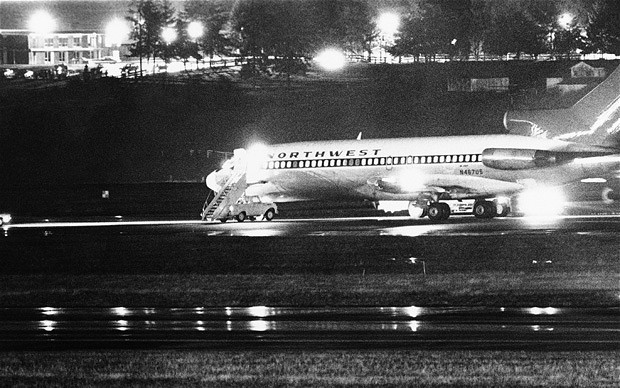
Another Dropzone contributor is Bruce Smith, who runs an online newspaper called Mountain News from his home near Mt Hood, north east of Portland. Like nearly everyone I meet, Smith is planning to write his own Cooper book. He doesn't advocate any particular suspect, but, in lieu of this, he has chosen a rather far-fetched conspiracy theory.
Over the course of an hour, Smith tells me that the FBI refuses to share its information, that evidence has gone missing and that the key players in the story refuse to ask questions. Maybe they're fed up with talking about it, I say. They've been talking about it for 40 years. How much more can they actually say?
He then tells me that eye witnesses could have been victims of "mind erasion". Apparently Cooper's dramatic heist could have been "an inside job by rogue elements in the FBI and pilots' associations who wanted to stage a simulation to show the American people how unsafe it was to fly". And there's a motive, Smith says: in 1971 pilots were concerned about flying unsafe aeroplanes. "Half this stuff is so wild," he says, "I can't even think about it." Quite.
Before I leave, I ask Smith why he thinks the Cooper case is so compelling.
"He beat the man," he says, smiling. "He's not just a folk hero, he's a folk genius. He's a master criminal in the tradition of Robin Hood and other gentleman bandits."
The one person I know can give me some perspective on the case is Geoff Gray, a New Yorker whose book, Skyjack: The Hunt for DB Cooper, is out in August. Like Blevins, Gray got turned on to the Cooper case following a phone call from Porteous. As Gray delved deeper into the story, he became convinced Christiansen was Cooper. "My imagination was taken over by the guts of this guy," he tells me. "We want to believe in heroes; we want to believe in romance and adventure, and the truth is, the banality of life doesn't offer it." But Gray quickly discovered the story he was chasing was constantly changing; that the different suspects he was investigating had equally compelling motives and that a number of people had claimed to be DB Cooper when they very obviously weren't.
"We all want to do things we're incapable of," says Gray. "To be heroes, and not necessarily the people we really are." There is a strong possibility that the case will never be solved, he adds; the DNA taken from the tie is incomplete, the fingerprints from the cigarettes only partial, and the FBI no longer have the budget to investigate properly.
Nevertheless, perhaps out of pride, the bureau says the case is still open.
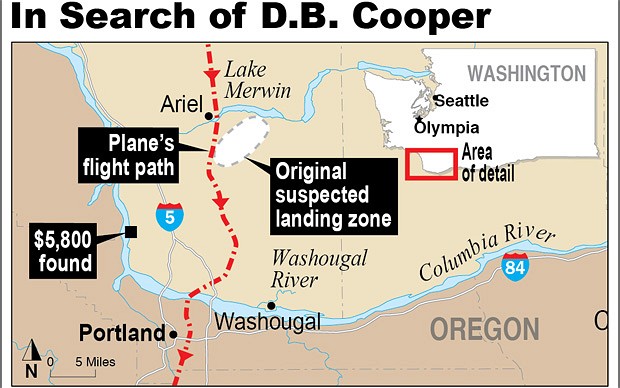
Throughout our meeting, Dietrich fields calls about counter terrorism on her Blackberry, an indication perhaps of how the FBI sees the Cooper case today - it takes a back seat to more pressing investigations.
"Being an open but not active case, we respond to every report or lead," she tells me. "Our case agent will check them out and determine whether they're credible. We're not out there combing for more evidence but we've kept it open in the belief that there could be something out there. The money has surfaced before and perhaps more will surface." She insists all the suspects still being touted by Cooper sleuths have been ruled out - either because they don't match the DNA or fingerprints they have on file, or because the descriptions just don't match up.
Before I arrived, I was fairly sure an interview with the FBI about the Cooper case would really just be a matter of routine - that they'd said all they could say over the past 40 years. But then Dietrich says something that catches me entirely off-guard.
"You're the first to know this, but we do actually have a new suspect we're looking at. And it comes from a credible lead who came to our attention recently via a law enforcement colleague." I'm stunned. Dietrich says she can't tell me much more, but like all the Cooper sleuths I've met over the past few days, I too have become a little obsessed with the case. "The credible lead is somebody whose possible connection to the hijacker is strong," she says. "And the suspect is not a name that's come up before." Dietrich says agents have sent an item that belongs to him for testing at the forensics lab in Quantico, Virginia. "We're hoping there are fingerprints they can take off of it," she says. "It would be a significant lead. And this is looking like our most promising one to date."
It's a pending investigation, and she can't tell me any more. I push her to see if she can say whether the suspect is still alive. "Generally, the large majority of subjects we look into now are already deceased based on the timing of this," she says. I follow up with Dietrich a week after my visit, but she says it could be some time before the FBI gets the results back.
Perhaps we are finally close to finding out the real identity of DB Cooper. Until then, people will continue to visit Cooper Country, picture that stormy night back in 1971 when a parachute landed somewhere out over the lower Cascades, and wonder: what did happen?
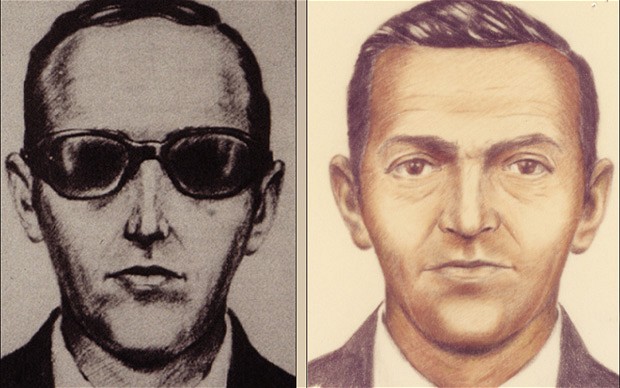
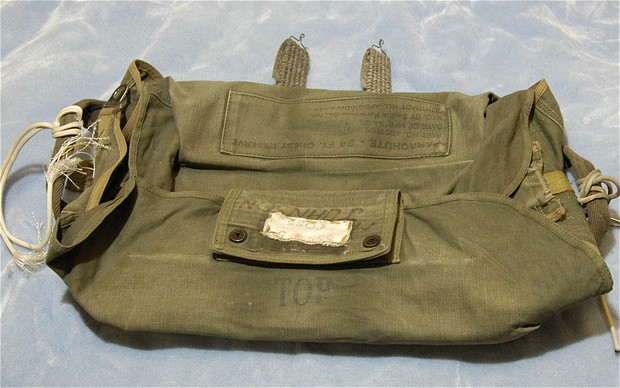
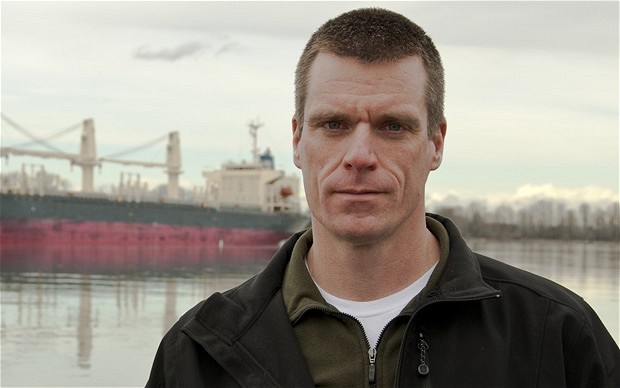



Not for robbing, but for lighting up on an airplane! We need more heroes!